Volume 9-14 (2020-26)
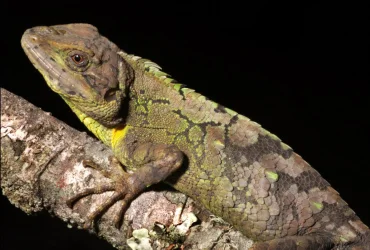 v13i1.325
v13i1.325ISSN: 1800-427X (printed)
eISSN: 1800-427X (online)
DOI:10.47605/tapro.v13i1.325
Submitted date: 31 October 2023
Accepted date: 30 April 2024
Published date: 30 May 2024
Pp. 31-32.
Progressive greying in the white-eared bulbul (Pycnonotus leucotis)
D.K. Jangir, R. Choudhary*, V. Sharma & S. Dutta
*Corresponding author. E-mail: rounakchoudhary17@gmail.com
Birds have long captured the fascination of ornithologists, in part due to their captivating and charismatic plumage colorations. Deviations from the normal in their plumage often result in what is known as aberrant plumage, a phenomenon that has been documented globally.
Section Editor: Barry W. Brook
eISSN: 1800-427X (online)
DOI:10.47605/tapro.v13i1.325
Submitted date: 31 October 2023
Accepted date: 30 April 2024
Published date: 30 May 2024
Pp. 31-32.
Progressive greying in the white-eared bulbul (Pycnonotus leucotis)
D.K. Jangir, R. Choudhary*, V. Sharma & S. Dutta
*Corresponding author. E-mail: rounakchoudhary17@gmail.com
Birds have long captured the fascination of ornithologists, in part due to their captivating and charismatic plumage colorations. Deviations from the normal in their plumage often result in what is known as aberrant plumage, a phenomenon that has been documented globally.
Section Editor: Barry W. Brook
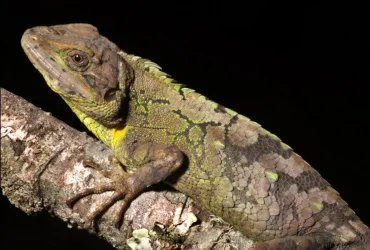 v13i1.324
v13i1.324ISSN: 1800-427X (printed)
eISSN: 1800-427X (online)
DOI:10.47605/tapro.v13i1.324
Submitted date: 7 July 2023
Accepted date: 30 April 2024
Published date: 30 May 2024
Pp. 30.
On the parental care of the dwarf snakehead (Channa kelaartii) in Sri Lanka
J. Bandara*, M.P. Gunawardena & S.R.D Ranaweera
*Corresponding author. E-mail: janaminabandara@gmail.com
The dwarf snakehead, Channa kelaartii (Günther, 1861) is a freshwater fish, widely distributed in streams and ponds of Sri Lanka and south India. This paper describes a record of intraspecific aggression behavior exhibited by C. kelaartii as a display of parental care in a natural ecosystem, along with a few other observations on parental care and protective instincts. Fishes were identified in the field, based on their morphological characters.
Section Editor: Upali S. Amarasinghe
eISSN: 1800-427X (online)
DOI:10.47605/tapro.v13i1.324
Submitted date: 7 July 2023
Accepted date: 30 April 2024
Published date: 30 May 2024
Pp. 30.
On the parental care of the dwarf snakehead (Channa kelaartii) in Sri Lanka
J. Bandara*, M.P. Gunawardena & S.R.D Ranaweera
*Corresponding author. E-mail: janaminabandara@gmail.com
The dwarf snakehead, Channa kelaartii (Günther, 1861) is a freshwater fish, widely distributed in streams and ponds of Sri Lanka and south India. This paper describes a record of intraspecific aggression behavior exhibited by C. kelaartii as a display of parental care in a natural ecosystem, along with a few other observations on parental care and protective instincts. Fishes were identified in the field, based on their morphological characters.
Section Editor: Upali S. Amarasinghe
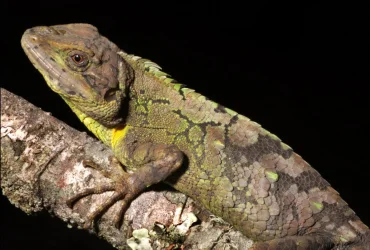 v13i1.323
v13i1.323ISSN: 1800-427X (printed)
eISSN: 1800-427X (online)
DOI:10.47605/tapro.v13i1.323
Submitted date: 19 September 2023
Accepted date: 30 April 2024
Published date: 30 May 2024
Pp. 28-29.
Tracking the migration of Albatross butterflies (Appias sp) in Sri Lanka
P.K. Dissanayake*, R. Gamage2, R.W.D.L. Kumara, N. Weerasinghe, D.M.N.P. Daundasekara, H.S.B. Wijesinghe & S.K. Gunatilake
*Corresponding author. E-mail: kapila@agri.sab.ac.lk
Among insects, butterfly migration is an eye-catching behaviour that occurs around the world. The mass migration of butterflies is little understood. In Sri Lanka, mass migrations of butterflies were recorded in the past, but they are now rare. Although those large migrations have not been observed during the past decades, more isolated small migrations do still occur occasionally. However, no definite direction of flight has been identified for these migrations except for point observations of directions. It is unclear in most instances where the butterfly migrations in Sri Lanka begin and end. Therefore, here we report observations on the migrations of two butterflies, the lesser Albatross (Appias galene Felder & Felder, 1865) and common Albatross (A. albina swinhoei Moore, 1905) during the inter-monsoonal period from March to April 2023. Observations were made at 60 random locations to determine the starting point and the directions of migration.
Section Editor: David G. James
eISSN: 1800-427X (online)
DOI:10.47605/tapro.v13i1.323
Submitted date: 19 September 2023
Accepted date: 30 April 2024
Published date: 30 May 2024
Pp. 28-29.
Tracking the migration of Albatross butterflies (Appias sp) in Sri Lanka
P.K. Dissanayake*, R. Gamage2, R.W.D.L. Kumara, N. Weerasinghe, D.M.N.P. Daundasekara, H.S.B. Wijesinghe & S.K. Gunatilake
*Corresponding author. E-mail: kapila@agri.sab.ac.lk
Among insects, butterfly migration is an eye-catching behaviour that occurs around the world. The mass migration of butterflies is little understood. In Sri Lanka, mass migrations of butterflies were recorded in the past, but they are now rare. Although those large migrations have not been observed during the past decades, more isolated small migrations do still occur occasionally. However, no definite direction of flight has been identified for these migrations except for point observations of directions. It is unclear in most instances where the butterfly migrations in Sri Lanka begin and end. Therefore, here we report observations on the migrations of two butterflies, the lesser Albatross (Appias galene Felder & Felder, 1865) and common Albatross (A. albina swinhoei Moore, 1905) during the inter-monsoonal period from March to April 2023. Observations were made at 60 random locations to determine the starting point and the directions of migration.
Section Editor: David G. James
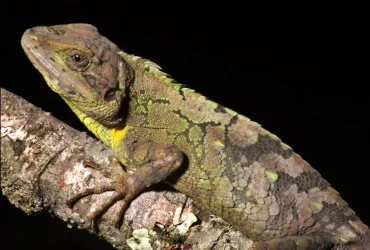 v13i1.322
v13i1.322ISSN: 1800-427X (printed)
eISSN: 1800-427X (online)
DOI:10.47605/tapro.v13i1.322
Submitted date: 7 July 2023
Accepted date: 30 April 2024
Published date: 30 May 2024
Pp. 27.
The first record of a female Azur sprite (Pseudagrion decorum) from Sri Lanka
J. Gunawardane, D.V.L.V. Samarasinghe* & H.D.B.H. Hettiarachchi
*Corresponding author. E-mail: lasanvibudha@gmail.com
The Azur sprite or elegant sprite (Pseudagrion decorum Rambur, 1842) is a medium-sized damselfly belonging to the Family Coenagrionidae. This species exhibits sexual dimorphism: males are pale blue in colour with three fine black lines on the mid-dorsum, whereas females are more greenish to yellowish in colour on the thorax. It is a common, widespread species in India, Pakistan, Bangladesh, and Nepal. In Sri Lanka, P.decorum is very rare; with one male recorded from a tank near Mannar in the Northern Province.
Section Editor: Wade Worthern
eISSN: 1800-427X (online)
DOI:10.47605/tapro.v13i1.322
Submitted date: 7 July 2023
Accepted date: 30 April 2024
Published date: 30 May 2024
Pp. 27.
The first record of a female Azur sprite (Pseudagrion decorum) from Sri Lanka
J. Gunawardane, D.V.L.V. Samarasinghe* & H.D.B.H. Hettiarachchi
*Corresponding author. E-mail: lasanvibudha@gmail.com
The Azur sprite or elegant sprite (Pseudagrion decorum Rambur, 1842) is a medium-sized damselfly belonging to the Family Coenagrionidae. This species exhibits sexual dimorphism: males are pale blue in colour with three fine black lines on the mid-dorsum, whereas females are more greenish to yellowish in colour on the thorax. It is a common, widespread species in India, Pakistan, Bangladesh, and Nepal. In Sri Lanka, P.decorum is very rare; with one male recorded from a tank near Mannar in the Northern Province.
Section Editor: Wade Worthern
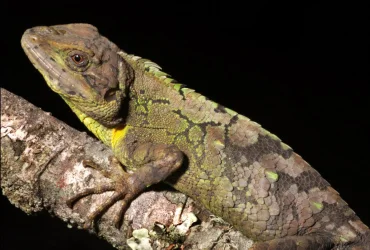 v13i1.321
v13i1.321ISSN: 1800-427X (printed)
eISSN: 1800-427X (online)
DOI:10.47605/tapro.v13i1.321
Submitted date: 28 August 2023
Accepted date: 30 April 2024
Published date: 30 May 2024
Pp. 26.
Predation of an orb-web spider (Argiope sp) on the baron (Euthalia sp)
M.S. Ahammed*
*Corresponding author. E-mail: md.sabbirahammedshawon@gmail.com
The giant cross spider (Argiope anasuja Thorell, 1887) is a carnivore that uses its orb-webs to trap insects and other invertebrates and is widely distributed throughout Seychelles, the Maldives, Iran, Pakistan, India, Bangladesh, Sri Lanka, and Australia (Cocos Is.). Scant information is available on the diet of these spiders in Bangladesh. On 1 April 2021 at 12:17 h, we observed a giant cross spider predate on a butterfly at Kendua (23°04′38.4″N, 91°19′12.3″E), Cumilla, Bangladesh. It was a sunny day while we were passing by a home garden and encountered this phenomenon. The spider was moving on its web, approximately 3 m above the ground. At the same time, a common baron (Euthalia aconthea) was flying around it. After a while, the baron flew into the web and got trapped. As soon as the baron got trapped, the spider wrapped it in silk.
Section Editor: Matjaž Gregorič
eISSN: 1800-427X (online)
DOI:10.47605/tapro.v13i1.321
Submitted date: 28 August 2023
Accepted date: 30 April 2024
Published date: 30 May 2024
Pp. 26.
Predation of an orb-web spider (Argiope sp) on the baron (Euthalia sp)
M.S. Ahammed*
*Corresponding author. E-mail: md.sabbirahammedshawon@gmail.com
The giant cross spider (Argiope anasuja Thorell, 1887) is a carnivore that uses its orb-webs to trap insects and other invertebrates and is widely distributed throughout Seychelles, the Maldives, Iran, Pakistan, India, Bangladesh, Sri Lanka, and Australia (Cocos Is.). Scant information is available on the diet of these spiders in Bangladesh. On 1 April 2021 at 12:17 h, we observed a giant cross spider predate on a butterfly at Kendua (23°04′38.4″N, 91°19′12.3″E), Cumilla, Bangladesh. It was a sunny day while we were passing by a home garden and encountered this phenomenon. The spider was moving on its web, approximately 3 m above the ground. At the same time, a common baron (Euthalia aconthea) was flying around it. After a while, the baron flew into the web and got trapped. As soon as the baron got trapped, the spider wrapped it in silk.
Section Editor: Matjaž Gregorič
Hubungi Kami
The ultimate aim of the journal is to provide an effective medium for communication of the latest and best scientific information.
Copyright © 2020 Taprobanica. All Rights Reserved
Jasa Pembuatan Website by IKT




